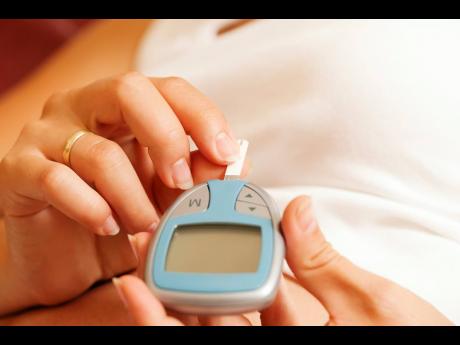How to detect, manage type 2 diabetes
Have you been diagnosed with type 2 diabetes, or have you been living with the disease for a while? Type 2 diabetes is the most common form of diabetes, and means that your body does not use insulin properly. People with type 2 diabetes are said to have insulin resistance. While some people can control their blood sugar levels with healthy eating and exercise, others may need medication or insulin to manage it.
People who are middle-aged or older are most likely to get this kind of diabetes. It was once called adult-onset diabetes, but type 2 diabetes also affects children and teens, mainly because of childhood obesity.
There are about 29 million people in the United States with type 2 diabetes and another 84 million have prediabetes, meaning their blood sugar or blood glucose is high but not high enough to be diabetic yet.
The symptoms of type 2 diabetes can be so mild that you do not notice them. About eight million people who have it do not know it. Symptoms include:
● Being very thirsty
● Peeing a lot
● Blurry vision
● Being cranky
● Tingling or numbness in your hands or feet
● Fatigue/feeling worn out
● Wounds that do not heal
● Yeast infections that keep coming back
● Feeling hungry
● Weight loss without trying
● Getting more infections
Usually, a combination of things causes type 2 diabetes. They might include:
● Genes – Scientists have found different types of DNA that affect how your body makes insulin.
● Extra weight – Being overweight or obese can cause insulin resistance, especially if you carry your extra pounds around your middle section.
● Metabolic Syndrome – People with insulin resistance often have a group of conditions, including high blood sugar, extra fat around the waist, high blood pressure, and high cholesterol and triglycerides.
● Too much glucose from your liver – When your blood sugar is low, your liver makes and sends out glucose. After you eat, your blood sugar goes up, and your liver will usually slow down and store its glucose for later. But some people’s livers do not and they keep cranking out sugar.
● Bad communication between cells – Sometimes, cells send the wrong signals or do not pick up messages correctly. When these problems affect how your cells make and use insulin or glucose, a chain reaction can lead to diabetes.
● Broken beta cells – If the cells that make insulin send out the wrong amount of insulin at the wrong time, your blood sugar gets thrown off. High blood sugar can damage these cells, too.
You may be able to reach your target blood sugar levels with diet and exercise alone; however, dropping extra pounds can help. While losing five per cent of your body weight is good, losing at least seven per cent and keeping it off seems to be ideal. That means someone who weighs 180 pounds can change their blood sugar levels by losing around 13 pounds. Weight loss can seem overwhelming, but portion control and eating healthy foods are good places to start.
There is no specific diet for type 2 diabetes. A nutritionist can teach you about carbs and help you make a meal plan that you can stick with. You can focus on eating fewer calories, cutting back on refined carbs, especially sweets, adding veggies and fruits to your diet, getting more fibre, and exercise.
Try to get 30 to 60 minutes of physical activity every day. You can walk, bike, swim, or do anything else that gets your heart rate up. Pair that with strength training, like yoga or weightlifting. If you take a medication that lowers your blood sugar, you might need a snack before a workout.
Watch your blood sugar levels. Depending on your treatment, especially if you are on insulin, your doctor will tell you if you need to test your blood sugar levels and how often to do it.
Even if you change your lifestyle and take your medicine as directed, your blood sugar may still get worse over time. That does not mean you have done something wrong. Diabetes is progressive, and many people eventually need more than one drug.



